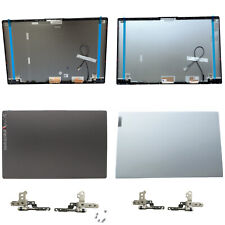-
Senior Member
registered user
64-bit LXDE Debian.LiveUSB
Code:
Partitioned 2 Gb SanDisk to 1200 Mb fat32, 800 Mb ext2; labeled ext2
as persistence; echoed "/ union" >> /media/persistence/persistence.conf.
Desktop time was already set to local; changed format to %l:%M %P.
Used external wifi to add b43, GParted & ttf-mscorefonts via Synaptic;
borrowed Knoppix's repositories for b43 & ttfs.
Added LibreOffice, Leafpad & Terminal to panel; set panel to auto-hide.
Removed Lock Screen & Minimize Windows from panel; added volume control.
Reduced browser cache limit to 25 Mb; adjusted fonts & underlines.
Added ChezHoye, changed homepage & added bookmarks.
Changed desktop image to Japanese print, adjusted background color;
removed Install Icon from desktop.
Added synclient TouchpadOff=1 to /etc/X11/Xsession.d/45x11-Synaptic
& ok to /etc/rc.local
Added Count & Channel apps to ~/.bashrc not /etc/profile.
Adjusted terminal font & foreground.
To do list:
Needs boot time parameter 'persistence' added for each boot.
May need terminate:ctrl_alt_bksp to restart screen.
With some effort the Debian.Live iso makes a fine LiveUSB with persistence.
The Debian.Live product's persistence approach, although elegantly simple, is
keenly obscured by its documentation. The iso carries Debian's disdain for 'non-free'
wifi drivers to an excruciating extreme. This may be overcome by temporarily applying
Knoppix's 'non-free' repository definitions to Debian.Live's Synaptic. Included
applications are not the very latest: Linux 3.2, LibreOffice 3.5, IceWeasel 17,
PCManFM 0.9.10, but that may contribute to the very stable and smooth feel of the system.
The basic system is contained in a normally ro compressed form on a squash
filestem in a fat32 partition; persistence is provided by a non-compacted rw overlay
in a second ext-formatted partition. There are adequate device assignments such that
numerous non-compact overlays might conceivably be compacted and transferred to
squashfs devices on the fat32 partition, but that's not currently advertised or developed
in any way that I know-of.
The trick to Debian.Live is as follows: make a second partition of est2, 3 or 4;
label that partition 'persistence'; provide a 'persistence.conf' file on the root (/)
directory of the ext partition; the conf file needs only one line '/ union';
finally, when you boot up with the other partition, include the parameter 'persistence'.
Forget all these quote marks as you apply this elegant process.
 Posting Permissions
Posting Permissions
- You may not post new threads
- You may not post replies
- You may not post attachments
- You may not edit your posts
-
Forum Rules


For Lenovo ideapad 5 15IIL05 15ARE05 15ITL05 15ALC05 Lcd Back Cover Rear Lid NEW
$49.98

Lenovo T490 14" FHD Laptop - Intel i7-8665U (1.9GHz) 16GB Ram, 512GB SSD W10Pro
$293.49

For Lenovo ideapad Flex 5 15IIL05 15ITL05 LCD Touch Screen Bezel 5D10S39643 New
$138.95

Lenovo IP 5 16IAU7 16" 2.5K Chromebook i3-1215U 8GB Ram 128GB eMMC Chrome OS
$219.99

Lenovo 500w Gen 3 Laptop, 11.6" IPS Glass, N6000, 8GB, 128GB SSD, Win 11 Home
$186.99

Lenovo Notebook IdeaPad 1 Laptop, N6000, 4GB, 128GB eMMC, Win 11 Home-Certified
$229.49

Lenovo Ideapad 1i 15.6" FHD Notebook Intel Core i5-1235U 8GB RAM 256GB SSD
$349.99

Lenovo ThinkPad Yoga 11e 11.6" 2in1 Touch Intel Core i3 4GB RAM 128GB SSD Win10
$59.00

Lenovo K14 AMD Laptop, 14" FHD IPS LED , Ryzen 5 5600U, GB, 256GB SSD
$569.00

Lenovo Flex 7 14IRU8 14" 2.2K Touch Intel Core i7-1355U 16GB 1TB SSD W11H
$549.99



 Reply With Quote
Reply With Quote










